How old are you on the inside?
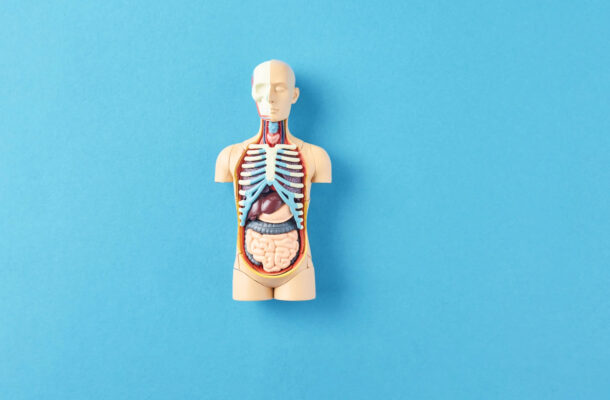
While age is commonly understood as the number of years you have been alive, different organs and tissues may age at different rates. This means your biological age may not necessarily be the same as your chronological age.
Our new research, published in Nature Medicine, shows that the biological age of a person’s brain and body can be easily measured.
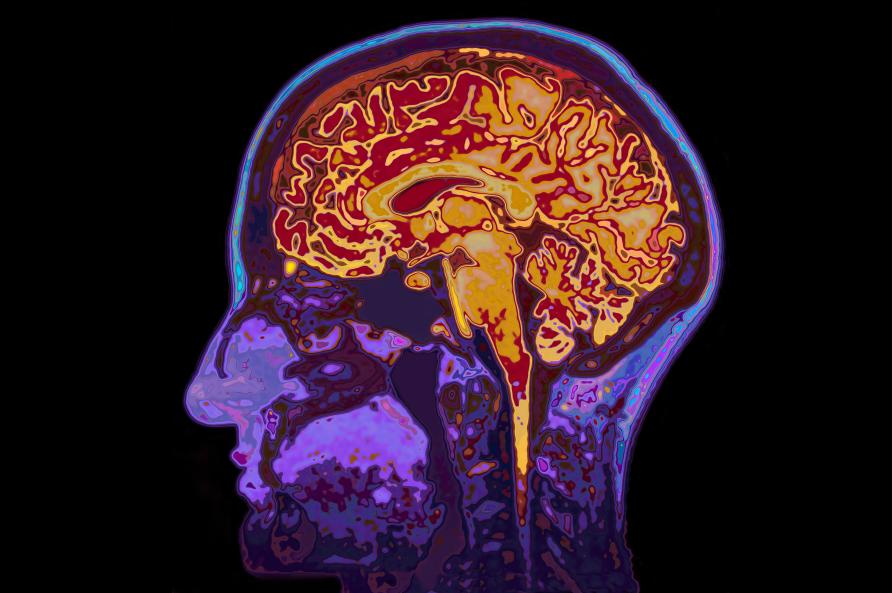
Your brain may appear younger or older than your chronological age.
In fact, the biological age of some organ systems can differ markedly from a person’s chronological age and this deviation between chronological and biological age can inform us of the person’s risk of chronic illness and premature mortality.
We call this our organ age clock.
What is an organ age clock?
This clock tells us whether the health and function of a person’s brain, heart, lungs and other organ systems appear older or younger than their chronological age.
For example, a 40-year-old may have a brain that appears more like that of a 50-year-old. In this case, we say that the person’s brain appears 10 years older than their chronological age.
In our study, we establish organ age clocks for the brain and seven body systems, including cardiovascular, lungs, musculoskeletal, immune, kidneys, liver and metabolic systems, in more than 100,000 adults who took part in the UK (United Kingdom) Biobank.
The Biobank is a large-scale biomedical database and research resource, containing in-depth genetic and health information from half a million UK participants.
We then used magnetic resonance imaging (MRI) brain scans and measures from a wide range of physical, physiological, blood and urine tests, which are already available in most clinical settings.
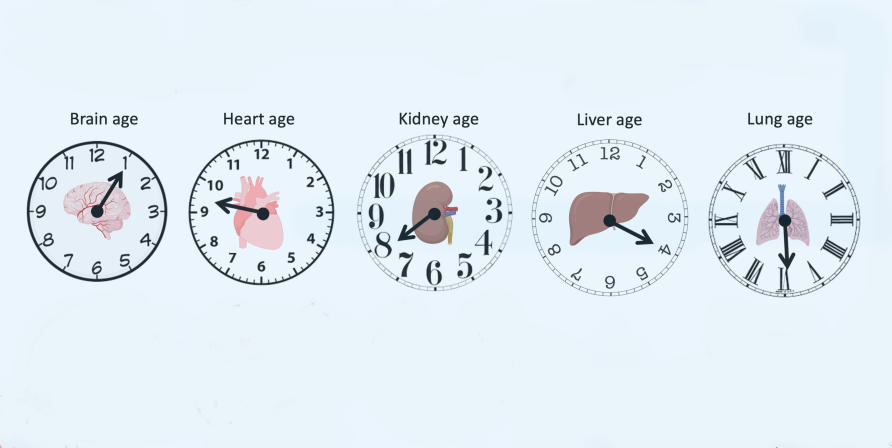
Age is understood to be the number of years that you’ve been alive, but organs and tissues may age at different rates.
Do different organ systems age at their own pace?
Our study reveals diverse organ ageing patterns; however, the ageing of different organ systems is closely linked.
Intriguingly, we found a multi-organ ageing network, where the age of one organ system selectively and characteristically influences the ageing of other organ systems.
So, if a person’s lungs appear older than their chronological age, it’s more likely that their heart, kidneys, bones and muscles, as well as their brain, will also appear older.
We also show that brain age is most influenced by the age of the lungs and heart, whereas the musculoskeletal system is a network hub – influenced by the extent of aging of most other organ systems.
Our organ age informs our risk of chronic illness
Where chronological age is a common risk factor for chronic illness, people at the same chronological age may present with varied risks of these chronic health conditions.
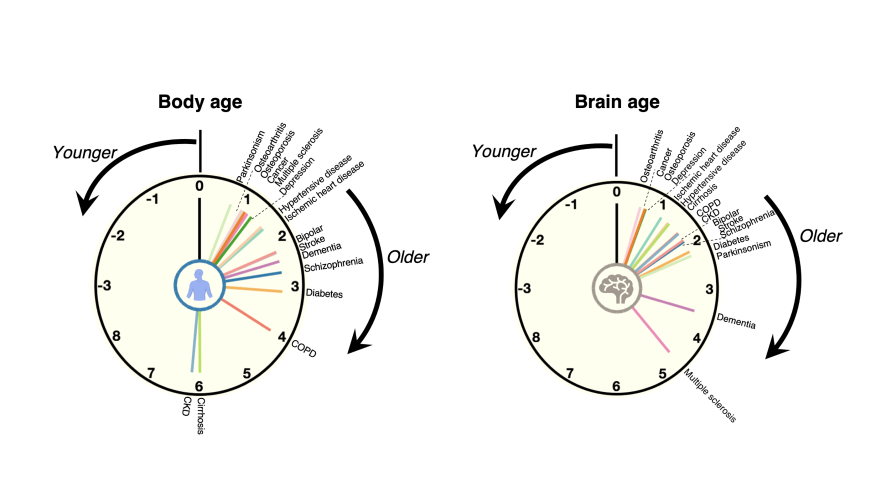
Body and brain age in 16 common chronic illnesses.
We studied 16 common chronic illness conditions including Parkinsonism, multiple sclerosis, stroke, dementia, depression, bipolar disorder, schizophrenia, coronary artery disease, hypertensive diseases, chronic obstructive pulmonary disease (COPD), chronic kidney disease (CKD), diabetes, cirrhosis, osteoarthritis, osteoporosis and cancer.
Our research found that advanced organ age significantly increases the risk of chronic illnesses and that chronic illnesses are characterised by unique organ ageing profiles.
More interestingly, across the 16 common chronic brain and body disorders, we show that advanced biological ageing extends from the organ of primary disease pathology to multiple organ systems.
For example, where advanced brain age (that is, an older-looking brain) is evident for most major brain disorders, like multiple sclerosis, dementia and Parkinsonism, people with non-brain disorders, like diabetes, CKD and COPD, also show significantly advanced brain age.
In fact, advanced organ age – particularly of the lungs, kidneys, liver and immune system – significantly raises a person’s mortality risk.
How to keep our brain and body young
Our study shows that smoking, alcohol intake, sedentary behaviour, poor sleep, air pollution and socioeconomic inequality are linked with an older-appearing brain and body.
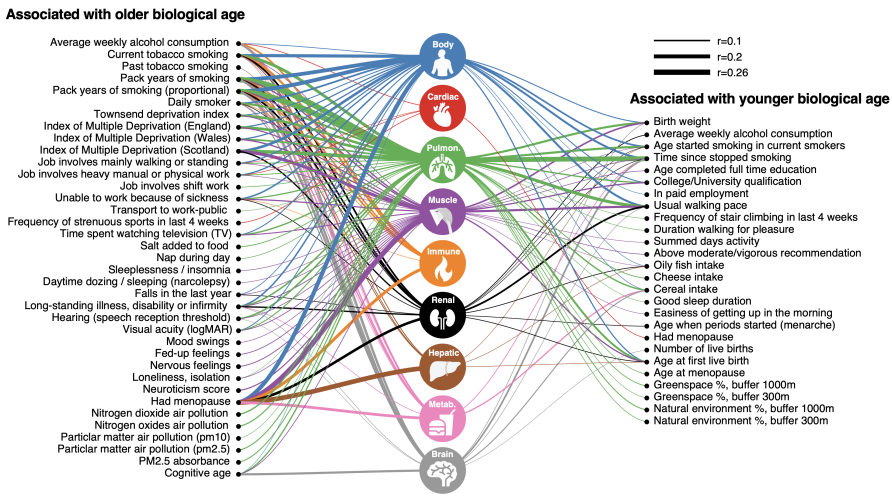
Environmental and lifestyle factors associated with organ age.
Fortunately, several of these factors are modifiable, potentially enabling you to reduce your brain and body age.
In contrast, people who have a larger birth weight, tertiary education, regular exercise and live in areas of greater greenspace and natural environment coverage tend to have a younger appearing brain and body.
The next step for our research is investigating whether modifying these factors can slow the rate of organ ageing and reduce the risk of chronic illness and premature mortality.
Measuring organ age
We hope that in the future, the biological age of a person’s brain and body will be routinely measured in the doctor’s clinic to identify people at risk of chronic disease, as well as inform medical professionals to commence early treatments and interventions.
Notably, most of the biomarkers and measures used to estimate biological organ age are already widely used in clinical settings which means our organ age clocks could move quickly and easily into clinical practice.
For now, if you’re worried about the health of your organs, head for a check-up with your GP and try to take good care of your body by practising good lifestyles – for the sake of your organs.
This article was written by Ye Ella Tian, a Mary Lugton Postdoc Research Fellow at the University of Melbourne and Professor Andrew Zalesky, a Professional Fellow at the same institution. It was published by Pursuit.
Dr Tian is a Research Fellow at the Melbourne Neuropsychiatry Centre where she uses data-driven approaches to understand brain development and ageing and unveil the neural mechanisms underpinning neuropsychiatric disorders.













